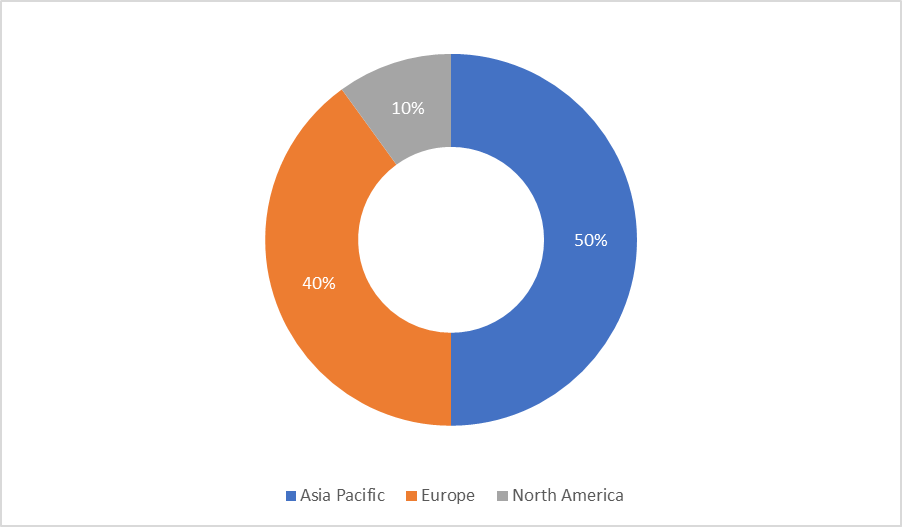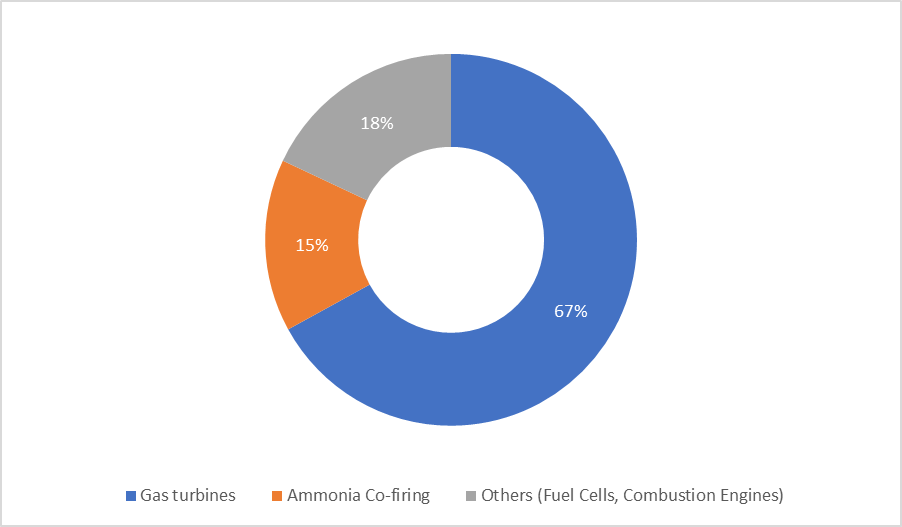The demand of hydrogen in power generation sector is negligible and accounts for only 0.2 per cent of the overall global hydrogen demand as of 2023 [1] . However, this is envisaged to drastically change in future as the demand for clean, reliable and baseload power picks up across the world.
As per IEA’s Announced Projects scenario, the total number of power projects utilising hydrogen or ammonia is slated to increase 21 – 22 fold from 330 MW in 2023 to a whopping 7,100 MW in 2030 [2] . The demand is expected to be driven mainly by announced power projects in Asia-Pacific (Japan, South Korea, China, Singapore) and Europe with about 10 per cent contribution from North America as of 2030. The expected distribution of demand from power generation sector is shown in Figure 1.

Figure 1 : Distribution of demand of hydrogen due to power generation, as of 2030
By 2030, it is expected that power generation using gas turbines (including combined cycle gas turbines), will lead the demand for hydrogen in the power sector, occupying about 67 per cent of the global demand. Power generation through co-firing ammonia in coal-fired thermal power plants is expected to account for another 15 per cent of the demand. The remaining demand will likely be met by technologies such as fuel cells and internal combustion engines. Figure 2 shows the distribution of hydrogen demand in power generation by technology.

Figure 2 : Distribution of demand of hydrogen due to power generation as per technologies, as of 2030